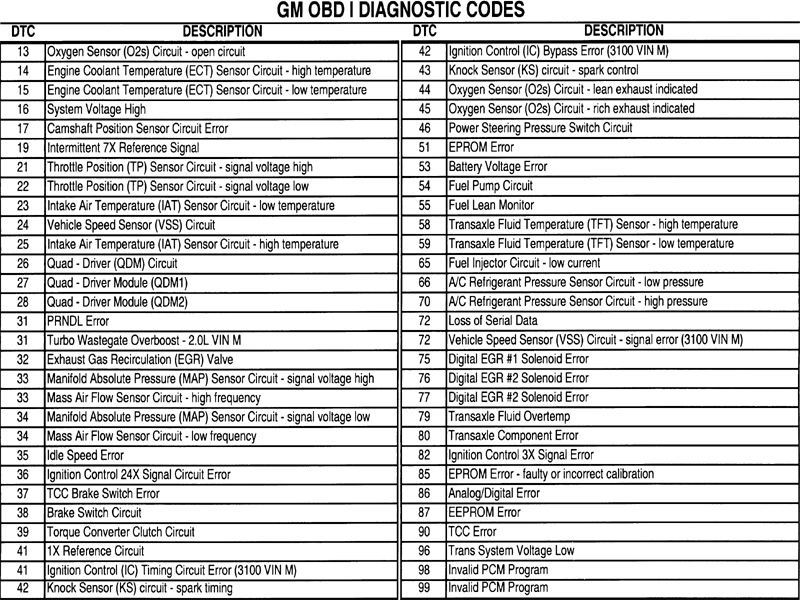That ominous glow on your dashboard – the check engine light – can be a source of anxiety for any driver. What does it mean? Is it something serious? Understanding how to retrieve and interpret check engine light codes can empower you to address potential car problems proactively and potentially save you money on unnecessary repairs. This guide will walk you through the process of deciphering those cryptic codes.
The check engine light, also known as the malfunction indicator lamp (MIL), is part of your car's onboard diagnostics (OBD) system. It's a warning system that alerts you to potential issues within your vehicle's engine, transmission, or emissions system. Ignoring it could lead to more serious problems down the road. This guide focuses on how to obtain those codes and understand their meaning, enabling you to make informed decisions about your vehicle's maintenance.
The OBD system's history goes back to the 1960s, with early systems focusing primarily on emissions control. However, the standardized OBD-II system, introduced in 1996 in the United States, revolutionized vehicle diagnostics. OBD-II mandates a standardized diagnostic connector and a set of diagnostic trouble codes (DTCs), making it easier for mechanics and car owners to identify problems. The ability to check these engine light codes has become essential for efficient vehicle maintenance.
The importance of understanding how to check engine light codes lies in the potential cost savings and improved control over your vehicle’s health. Instead of rushing to a mechanic for every illuminated check engine light, you can diagnose the issue yourself, determine its severity, and decide on the best course of action. This can range from a simple fix, like tightening a gas cap, to understanding when a professional mechanic is needed.
Retrieving diagnostic trouble codes is generally straightforward. You’ll need an OBD-II scanner, a readily available and affordable device that plugs into your car’s diagnostic port, usually located under the dashboard on the driver’s side. The scanner retrieves the DTCs stored in your car’s computer, which are then used to identify the specific problem.
A DTC is a five-character alphanumeric code. For example, the code P0420 indicates a problem with the catalytic converter system efficiency. The first character, "P," signifies a powertrain-related code. Other letters represent different systems, like "B" for body, "C" for chassis, and "U" for network communication. The remaining digits pinpoint the specific nature of the malfunction.
Benefits of checking engine codes: 1) Early problem detection, 2) Cost savings, 3) Informed decision-making.
Step-by-step guide: 1) Locate the OBD-II port, 2) Plug in the OBD-II scanner, 3) Turn on the ignition, 4) Retrieve the codes.
Advantages and Disadvantages of Checking Engine Light Codes
| Advantages | Disadvantages |
|---|---|
| Early problem detection | Misinterpretation of codes |
| Cost savings | Inability to fix complex issues |
Best Practice: Always clear the codes after addressing the issue and see if the light returns.
Real Example: A P0442 code often indicates a loose gas cap.
Challenge: Intermittent problems. Solution: Use a scanner with live data capabilities.
FAQ: What does a flashing check engine light mean? A flashing light indicates a serious problem requiring immediate attention.
Tip: Write down the codes before clearing them.
In conclusion, understanding how to check check engine light codes empowers you to take control of your vehicle's maintenance. It allows you to diagnose problems early, potentially saving you money and avoiding costly repairs down the line. By familiarizing yourself with the process of retrieving and interpreting DTCs, you become a more informed and proactive car owner. While retrieving the codes is a valuable first step, it’s important to remember that it’s just that – a first step. Further diagnosis may be required to fully understand the issue and determine the appropriate repair. Don’t hesitate to consult a qualified mechanic if you're unsure about the next course of action. Taking the time to learn about your car's diagnostic system is an investment that will pay off in the long run, ensuring smoother, safer, and more cost-effective driving experiences. Start learning today and take charge of your car's health.
Engine Trouble Code P0420 - Trees By Bike
Honda Check Engine Code List - Trees By Bike
Common Check Engine Light Codes - Trees By Bike
Honda Engine Light Codes - Trees By Bike
Auto Check Engine Codes - Trees By Bike
2008 Honda Accord Check Engine Light Flashing - Trees By Bike
2012 Chevy Equinox Check Engine Light Codes - Trees By Bike
Honda engine codes codes - Trees By Bike
Check Engine Light Codes Free Diagnosis at Marcy Love blog - Trees By Bike
Check engine light codes toyota 4runner - Trees By Bike
Toyota Check Engine Light Codes - Trees By Bike
Toyota Camry Check Engine Light Codes - Trees By Bike
Auto Trouble Codes Check Engine Light - Trees By Bike
Honda Check Engine Light Codes - Trees By Bike
Check Engine Codes Jeep Wrangler - Trees By Bike













